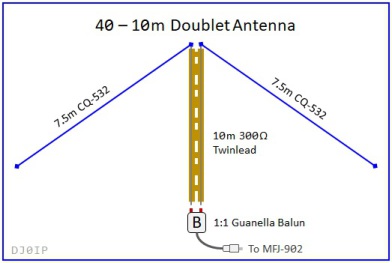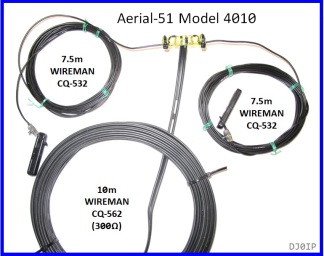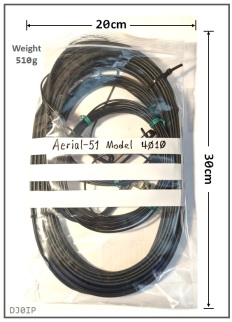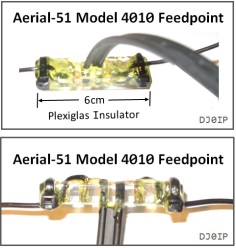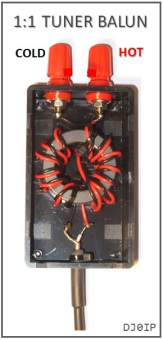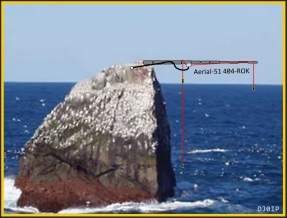Aerial-51 Model 4010-ROK
The unique physical conditions when operating on the Rock is a challenge. It is impossible to predict what impact those conditions might have on the various antenna types. As a result, the operators will take several different antennas with them to have alternatives, in case one or more of the antennas does not work as it should.
The 4010 antenna is fairly compact and can be inserted into a 20 x 30 cm plastic bag.
Its total weight including 10 meters (33 ft.) of feedline is just 510 grams, or about 1 lb, 2 oz.
Although it was designed to work from 40m to 10m, it will also work fairly well on 80m if the antenna matchbox is capable of matching it.
CENTER INSULATOR:
The feedpoint insulator is made of Plexiglas.
It is just 6cm (2.4 in.) long.
Strain-relief for both wires and the feedline is accomplished by passing the wires through the insulator twice, soldering together, and coating with 2-component Epoxy glue.
The result is a very sturdy, ultra-light center insulator for the 4010.
The BALUN is a 1:1 Guanella with 13 turns of twisted-pair wound onto an FT-140-43 Toroid. The wire is 18-AWG, silver-plated, solid copper, Teflon-insulated.
It is shown here without its lid and before the 2-component Epoxy glue was added to insulate the connections.
Of course the 110 Ohm resistor across the feedline terminals will be removed before use. It was only temporarilly used to measure
the SWR curve across the HF spectrum.
The antenna will be matched with an MFJ-902 (T-Network) antenna tuner.
The balun photo is viewed from the lid-side of the enclosure.
FLEXIBILITY:
The center insulator will be strapped to the fiberglass pole using 2 wire-ties.
Normally, these antennas are erected as a Flat-Top or Inverted-V antenna. It is not known if the team will be able to erect one of the fiberglass poles vertically, angled or if it must be mounted horizontally, laying on the rock.
Even if the pole is vertical, there may not be a possibility to erect the antenna as an Inv.-V.
If mounted vertical, then the vertical radiator connects to the HOT terminal and the
single radial connects to the COLD terminal. The radial may lay on the rock or be drooped over the side of the rock.
A third possibility would be to mount it as an Inv.-L with one leg running horizontal on the pole and the other leg just hanging down towards the watter, supported by a 2 oz. lead fishing
weight.





